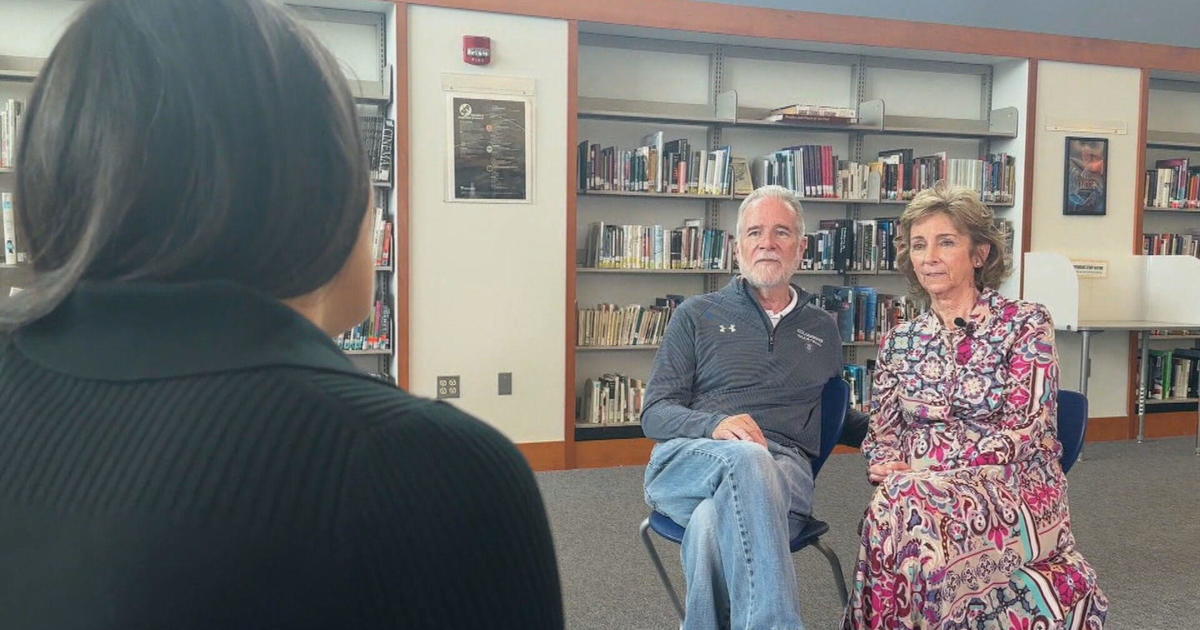The Risk Of Yellowstone's Mighty Volcano
YELLOWSTONE NATIONAL PARK (CBS4) - The tourists are showing up as the season gets going at Yellowstone National Park, some of them oblivious to what lies beneath.
"The volcano?" asked a young woman who had just started her summer job in West Yellowstone.
"I've heard about the one in Iceland, not the one in Yellowstone."
The volcano in Iceland has got us thinking about the power that's roiling under the earth's surface. It has forced airlines all over Europe to cancel flights because the ash -- tiny particles of glass can clog and damage engines as it hits at hundreds of miles per hour.
If the Yellowstone volcano has a major eruption, you won't be thinking much about flying.
"Almost everybody knows something about Mt. St. Helens," said the US Geological Survey's Dr. Harley Benz.
Benz is scientist in charge at the USGS office in Golden. He's busy tracking earthquakes these days, but spent five summers in Yellowstone writing his master's thesis on the volcano. Benz explained there are three known major eruptions, 2.1 million years ago, 1.3 million years ago and 640 thousand years ago.
In the eruption 640 thousand years ago, the ash was 1000 times greater than Mt. St. Helen's. And that wasn't the biggest. When the Yellowstone volcano went off 2.1 million years ago scientists figure is pushed out 585 cubic miles of material. When Mt. St. Helens erupted 30 years ago this week, it ejected one-10th of a cubic mile of material. Do the math -- that's about 6,000 times the size of Mt. St. Helens.
"We're talking about a huge area that was covered in tens of feet of ash," said Benz. "In a very large area out to 100 miles from the center."
Ash would cover a large portion of the western United States.
In Denver, 500 miles away from Yellowstone, we've seen 2 to 3 feet of ash in past super eruptions.
"This ash when it comes up is maybe about 2,000 degrees Fahrenheit," said Dr. Hank Heasler, park geologist at Yellowstone. "So very hot and then it moves laterally at hurricane force winds and that's what causes a wide zone of destruction."
That would simple level nearby towns like West Yellowstone. Jackson, Wyo., 70 miles away, would be buried in dozens of feet of ash.
The volcano is so large it wouldn't even look like the volcanoes we think of today.
"There were two somewhat main vents, but then what we call ring fractures which were ejecting material," explained Dr. Heasler. He talked to us inside the giant caldera left by previous eruptions. It's about 35 by 45 miles in size, far bigger than the craters left in mountains like St. Helens after a volcano.
The caldera can't be seen with the naked eye, but there are parts of the park where you can see the rim.
The caldera dropped like a pie after baking, settling down over the huge magma plume beneath. That's what makes the volcano still a possibility.
Yellowstone's unique geysers are in the caldera. Water features are the result of water seeping down to the super heated rock below. As it heats up, it expands and rises to the surface. The magma chamber is enormous and moving all the time.
"In some areas only about 3 mile depth, in other areas about 8 miles, in other areas 15 miles," said Heasler. "Normally those temperatures would be perhaps 75 miles beneath the surface of Denver."
The good news is, the magma chamber is not ready to blow. Scientists believe the rock needs to be in a 50 percent molten state known as "melt." Right now, the melt is believed to make up about 5 percent.
"So think of this like a very, very very thick slushy," said Heasler. "It's 95 percent ice crystals, five percent water that's been poured in it."
We wondered how quickly it could reach the 50 percent melt state.
"It could change in a matter of days to years."
That's not very comforting.
Experts have dozens of monitoring stations around the park to measure earthquake activity and the rising and falling of the caldera. Yellowstone is the second most seismically active part of the United States. This year, there's been another of what are called, earthquake swarms. But again, not to worry.
"Keep in mind that over the last 20 years in Yellowstone there've been at least 80 dramatic earthquake swarms where we get 2,000 or 3,000 earthquakes over a period of 2 or 3 months," said Dr. Benz.
Heasler said an impending eruption would mean vast changes at the surface, including certain types of earthquakes.
"They're shallowing, getting shallower with respect to time. At the same time we'd have ground moving up, it would be deforming."
There would also be gases released.
Now for conspiracy theorists out there -- and there are a few of them -- it's true that gases are being released now. It's also true that there are earthquakes and in parts of the park. The ground has risen by sometimes more than an inch in recent years. The problem with doomsday theories is that that caldera is also dropping in other areas.
"We've had all those things in Yellowstone," said Heasler, "But they haven't occurred in the same area."
The earthquakes don't fit the profile and gases are always being released. The monitoring going on now will give experts new information, and they're confident they will know weeks or months ahead of time before any big eruption and even a smaller one.
There have been perhaps 80 smaller eruptions in the caldera since the last big one 640,000 ago. They are localized in their effects.
If there's going to be any volcanic activity at Yellowstone, the odds dictate that's far more likely.
All of the information is public, so there's no covering up the coming of a super volcano.
Experts concur nothing shows Yellowstone will be anything but a bucolic National Park for the foreseeable future.
"The likelihood statistically of a large caldera forming eruption is about the same as a mile wide asteroid hitting the earth," said Heasler.
As for conspiracy theorists who think one might be triggered?
"We don't believe so and some conspiracy theorists think we have the ability to do it and let me just say that I and my colleagues are not that smart," laughed Heasler.
Alan Gionet is anchor of the CBS4 Morning News and reports on a wide variety of issues and "Good Question" stories. He started at CBS4 in 1994. Follow Alan on Twitter @AlanGTV.



